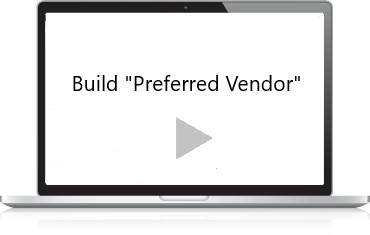Qualitative Segmentation: The Analysis Difference
“Segmentation” is the organization of data into buckets in order to gain insight. But what if the basis of those buckets doesn't exist in the data? That's when "qualitative segmentation" is required. You'll need the agility to create brand new dimensions in the dataset, create new buckets in those dimensions, and map data into those buckets — on the fly.
For example, is a particular supplier “Preferred” (we have a good contract) or “Bypass” (we should not be using them)? Should we source a vendor or commodity in the first wave, or the second wave, or not at all? What is our estimate of savings percentage by commodity? By commodity by vendor? If you can't easily segment your data along new dimensions, your insights run out quickly.
It is possible to segment data this way in Excel, but the result is unmaintainable in practice and therefore not helpful except for quick looks. BI systems and most spend analysis systems cannot do qualitative segmentation at all.

Create a Preferred Vendor dimension (1:35)
In Spendata new dimensions can be added instantly and mapped immediately. No offline processing, such as dumping transactions to Excel, is ever necessary. Spendata’s automatic familying and mapping tools are online and fully available to you — and they are both effective and easy to use. Spendata’s manual mapping tools are also intuitive and powerful — just drag items from a source to a destination item, and you’ve created a mapping rule that will be remembered and replayed whenever you add data.
All of these capabilities are fully documented, with both video help and written documentation.
You can use Spendata’s segmentation power to take the system far beyond “just” a display of spend transactions. By creating meta-segmentations like Sourcing Wave and Estimated Savings, you can create entire sourcing plans. And unlike ordinary sourcing plans, you can take your plan to business unit managers and other stakeholders, modifying it on the fly during the meeting to conform to constraints or opportunities you were not aware of. A sourcing plan with everyone’s buy-in and everyone’s input can be created quickly and easily — and then provided back to stakeholders with progress against plan over time.
Whether you choose to perform your own segmentation with Spendata, or hire a services provider to do it for you, you will:
- always have the tools at your disposal to change mappings, to add new columns and mappings, or to build entirely new datasets.
- never be dependent on a third party to maintain your spend cubes, and
- always have the capability to make instant changes as required.
Regardless of whether you solicit help or not, there’s no more waiting for the next “refresh” in order to see your changes. Just make the change and you’re done.

